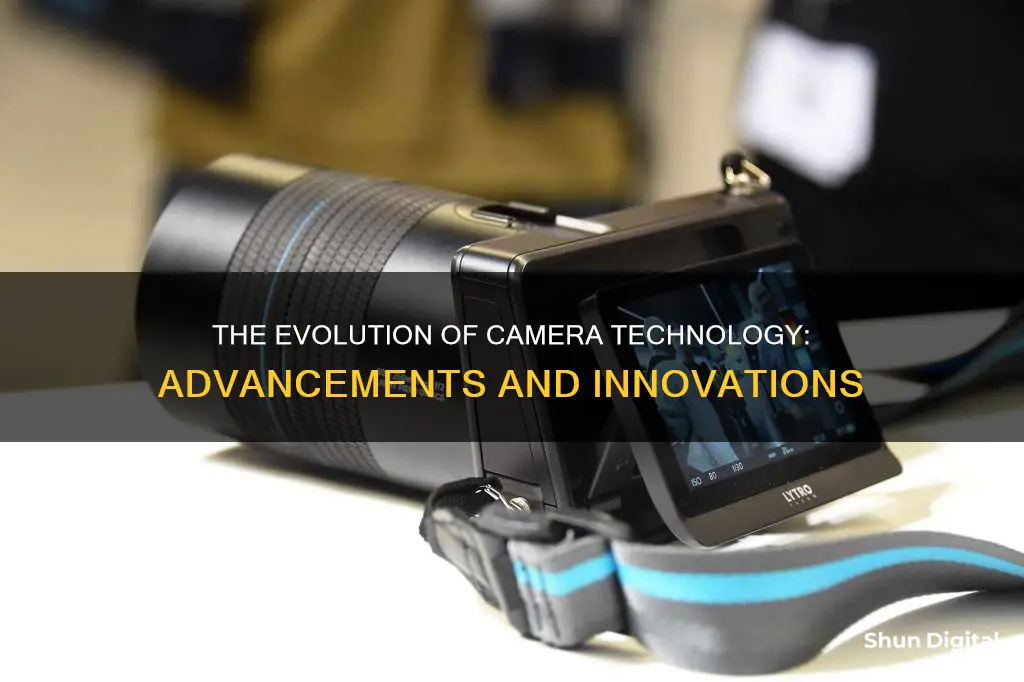
The history of the camera is a long and fascinating one, stretching back centuries. The ancient camera obscura, first explained by Han Chinese philosopher Mozi, laid the groundwork for future developments. Over time, cameras evolved from large, cumbersome devices requiring lengthy exposure times to the compact, versatile tools we know today. The introduction of photographic film by George Eastman in 1885 marked a pivotal moment, making cameras accessible to consumers. Eastman's Brownie camera, released in 1901, was the first to offer snapshot capabilities in a portable package, becoming a favourite for families.
The 20th century saw rapid advancements, with experiments in 35mm film, the emergence of instant cameras like the Polaroid in 1948, and the introduction of digital cameras in the 1970s. While early digital cameras were costly and had limited resolution, they eventually became more affordable and mass-produced. Today, a decent digital camera can be purchased for a few hundred dollars.
The rise of smartphone cameras has been a game-changer, with image sensors becoming smaller yet more capable, and computational enhancements elevating photo quality. The convenience and constant improvements in smartphone cameras have made dedicated cameras less necessary for casual photographers.
| Characteristics | Values |
|---|---|
| Image Sensor Size | Bigger image sensors produce better results. |
| Megapixels | More megapixels generally mean better image quality, but this also depends on other factors. |
| Aperture | A wider aperture lets in more light and allows for quicker shutter speed. |
| Flash | Xenon flash is very bright, but bulky and power-hungry. LED or dual-LED flash is more subtle. |
| Focus | Autofocus has become faster and more accurate over the years. |
| Optical Image Stabilization | This feature keeps videos steady and allows the shutter to stay open longer without blur. |
| Number of Cameras | Adding an extra camera provides more data for the camera to work with. |
What You'll Learn

Improved image sensors
Image sensors are a crucial component of digital cameras, responsible for capturing light and converting it into electrical signals to form an image. Over the years, improvements in image sensor technology have led to advancements in photographic capabilities. Here are some details on how image sensors have evolved and improved:
- CCD to CMOS Transition: The two main types of image sensors are CCD (Charge-Coupled Device) and CMOS (Complementary Metal-Oxide-Semiconductor). While CCD sensors have been used for many years and are known for their excellent image quality and low noise, CMOS sensors have gained popularity due to their lower power consumption, faster readout speeds, and reduced manufacturing costs. This transition from CCD to CMOS sensors has resulted in more energy-efficient and affordable cameras without compromising image quality.
- Back-Side Illumination (BSI): BSI technology has significantly improved image sensor performance, especially in low-light conditions. BSI sensors allow for increased light sensitivity and reduced noise by capturing light from the backside of the sensor, enhancing the overall image quality.
- Stacked CMOS Sensors: Stacked CMOS sensors offer faster data processing speeds and a more compact size. These sensors have multiple layers, with dedicated layers for pixel sensing and data processing, resulting in improved performance in high-speed photography.
- Higher Pixel Count: The number of pixels in image sensors, often measured in megapixels, has increased significantly over time. Higher pixel counts contribute to capturing more detailed and higher-resolution photographs. However, it's important to balance the number of pixels with noise reduction techniques to ensure sharp images.
- Dynamic Range: Improvements in image sensors have led to a wider dynamic range, enabling cameras to capture a broader range of light intensities. This enhancement results in photographs that more accurately reflect natural lighting conditions and deliver stronger colour accuracy.
- Autofocus Technology: Advancements in autofocus systems, such as phase-detection and contrast-detection autofocus, have revolutionized image sensors. Modern cameras and smartphones can now quickly and accurately focus on subjects, making it easier than ever to capture sharp images.
- Sensor Size: Image sensor sizes have varied over time, with larger sensors typically offering better image quality, low-light performance, and dynamic range. Different sensor sizes, such as full-frame, APS-C, Micro Four Thirds, and 1-inch sensors, cater to various photographic needs, budgets, and camera body sizes.
- Bayer Filters: The Bayer filter, a microfilter overlay, enables image sensors to record light wavelength in addition to light intensity. This technology, combined with demosaicing algorithms, helps reproduce accurate colours in the final image.
- Noise Reduction: Improvements in pixel structure, noise reduction technology, and image processing have allowed for smaller pixel sizes without sacrificing sensor sensitivity. This means that cameras can capture images with reduced noise levels, resulting in sharper and clearer photographs.
- Curved Sensors: Traditional flat image sensors can introduce a phenomenon called Petzval field curvature. Sony introduced the concept of curved sensors, which can help reduce or eliminate this issue, leading to improved image quality.
Unlocking Note 9 Camera Modes: Program Mode Included?
You may want to see also

Higher megapixel counts
The number of megapixels you need depends on your specific use case. If you are looking to print large photos or do heavy cropping, then a higher megapixel count can be beneficial. For example, if you want to print a high-quality 6x4-inch print, you will need around 2 megapixels, while a large 24x16-inch print of equal detail would require around 35 megapixels.
On the other hand, if you are mainly using your photos for social media or online purposes, a lower megapixel count may be sufficient. Additionally, keep in mind that higher megapixel counts require better lenses to capture all the extra detail.
It's important to consider the trade-offs when deciding on the megapixel count for your camera. While more megapixels can provide more detailed images, it can also result in increased noise, larger file sizes, and higher costs. Ultimately, the ideal megapixel count will depend on your specific needs and how you plan to use your camera.
High-Res Mode: Maximizing Your Camera's Potential
You may want to see also

Better flash
A better flash can be achieved through a variety of methods, each with its own advantages and disadvantages.
One way to improve the flash is to use a flash modifier. Flash modifiers can help remove dark shadows, remediate the red-eye effect, and create lighting that flatters the subject, making the overall photograph more pleasant. There are three types of flash modifiers: domes, reflectors, and portable softboxes. Domes are small, translucent bowls that fit on top of the flash unit and scatter the light. Reflectors are attached to the body of the flash unit and bounce the light off their white or silver surface, dispersing it. Portable softboxes are large, lopsided boxes with one translucent side that the flash bounces off of, creating soft, even lighting. Flash modifiers are often bulky and can reduce the working range of the flash, but they can significantly improve the quality of photographs.
Another way to improve the flash is to use a flash extender, such as the Better Beamer Flash Extender. Flash extenders increase the light output from the flash, allowing it to focus with big telephoto lenses. They also reduce battery consumption and improve recycle times.
Additionally, using a swivel head on the flash can improve its results by allowing the photographer to direct the light.
Finally, using a "True Tone" dual-LED flash, like the one found in the iPhone 5s, can improve the flash by supporting two different color temperatures for improved white balance.
Stealth Trail Cameras: What Batteries Do They Use?
You may want to see also

Better autofocus
Autofocus systems have been developed to allow photographers to capture images with a sharp focus. Autofocus works by intelligently adjusting the camera lens to obtain focus on the subject. This can mean the difference between a sharp photo and a missed opportunity.
There are two types of autofocus systems: Active AF and Passive AF. Active AF systems were used in the early days of autofocus technology and relied on the camera transmitting an ultrasonic or infrared signal toward the subject to calculate the distance. Passive AF, on the other hand, uses either Phase Detection or Contrast Detection to detect contrast.
Phase Detection AF uses an array of microlenses to focus. It is very fast, making it ideal for tracking fast-moving subjects. Contrast Detection AF, on the other hand, relies on software algorithms that probe through areas of an image for edge detail. It is generally known to be slower on most cameras but can be more reliable and accurate in low-light conditions.
Most modern cameras use a combination of Phase and Contrast Detection, known as Hybrid AF, to achieve extremely fast and accurate results.
The number of autofocus points can also vary between cameras, with high-end SLR cameras offering 45 or more autofocus points, while other cameras may have as few as one central AF point. The more autofocus points a camera has, the more robust and flexible its autofocus system is.
In addition to the number of autofocus points, the type of AF points is also important. There are three types of AF point sensors: vertical, horizontal, and cross-type. Cross-type sensors are two-dimensional and can detect contrast in both vertical and horizontal lines, making them more accurate than vertical or horizontal sensors, which are one-dimensional.
Other factors that can impact autofocus performance include the quality of light, the camera's focus detection range, lens maximum aperture, and the speed of focus motors. In low-light conditions, it is tougher for the camera to detect contrast, so Passive Autofocus may struggle. A wider focus detection range allows cameras to focus more reliably in extremely dark conditions.
Faster lenses with larger maximum apertures, such as f/2.8, are generally better for autofocus performance as they strike a balance between the amount of light entering the lens and the depth of field.
Overall, autofocus systems have improved over the years, offering photographers more advanced features and better performance in capturing sharp images.
Mastering Camera Raw Cache: Tips to Control Size
You may want to see also

Optical image stabilisation
Optical image stabilization (OIS) is a technology used in cameras and smartphones to reduce the effects of camera shake and other types of motion blur in photos and videos. It is particularly useful when shooting without a tripod, with a long lens, or in low-light conditions. OIS uses sensors and microprocessors to detect and correct camera movement, resulting in sharper, more stable images. It is considered the most effective form of image stabilization, especially for longer lenses where it is supremely difficult to get a good handheld shot without it.
OIS works by detecting camera motion and then moving the lens or sensor in the opposite direction to compensate for the movement. This is done using a gyroscope or other types of sensors, such as piezoelectric angular velocity sensors, which detect horizontal and vertical movement. The most common type of OIS uses a gyroscope to detect camera motion and then moves the lens elements or sensor to compensate. Miniature motor components, or housed motors, can also be used to provide OIS. Some manufacturers combine OIS with digital stabilization (DIS) to correct the effects of more extreme camera movements.
OIS is especially useful for photographers who want to take high-quality photos or videos in low-light conditions with slower shutter speeds. It is also beneficial when using telephoto lenses with extremely long focal lengths, where even small amounts of camera shake can significantly impact picture clarity. OIS prolongs the shutter speed possible for handheld photography by reducing the likelihood of blurring the image from shake.
OIS is commonly found in digital cameras, camcorders, and smartphone devices. Each camera and lens manufacturer typically uses a unique name for their OIS technology. For example, Nikon calls it Vibration Reduction (VR), Canon calls it Image Stabilizer (IS), and Olympus uses the term In Body Image Stabilization (IBIS).
The Revolutionary 360-Degree Camera Moto Mod: An Immersive Experience
You may want to see also
Frequently asked questions
The camera has evolved from the camera obscura, through daguerreotypes, calotypes, dry plates, film, and now digital cameras and camera phones. The first permanent photograph of a camera image was made in 1826 by Joseph Nicéphore Niépce. The first camera to be sold with film already loaded inside was the Kodak camera. The first digital camera was produced in 1988 in Japan.
Smartphone cameras have become more capable and versatile, with improved image sensors, increased megapixels, wider apertures, and better on-board camera flashes. The addition of extra cameras and improvements in software processing have also enhanced the quality of smartphone cameras.
A bigger image sensor in a camera allows the camera to capture more light and colour detail, resulting in better image quality.
The introduction of mobile phones and smartphones with built-in cameras has significantly impacted the camera industry. As smartphone cameras have improved, most people no longer see the need to carry or buy a dedicated camera, resulting in a decline in camera shipments.







